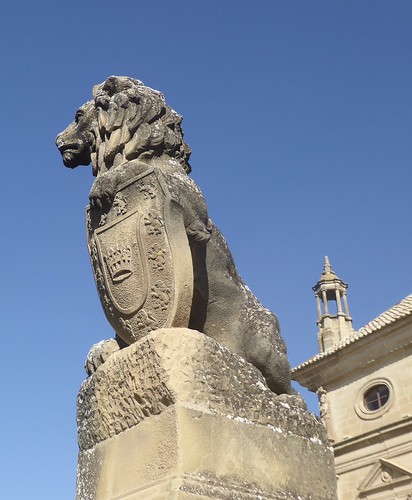Lysates were spun at 14,000xg for 15 min at 4 and retained at -70 until use. Immunoprecipitation and blotting were performed as formerly explained [22].Knowledge proven are the imply SD they were analyzed by ANOVA, considered substantial  at p < 0.05.Although it is well documented that different non-lymphoid tumors express CD43 [10], the role for this mucin in cell transformation is not entirely elucidated. Exogenous CD43 expression in non-hematopoietic cells containing ARF and p53 mutations has been shown to result in cell proliferation [23]. In contrast, in cells expressing wild-type ARF and p53, CD43 expression leads to cells death [24]. This suggests that CD43 requires additional oncogenic signals to promote cell proliferation in non-hematopoietic cells. To test whether CD43 signals could favor cell transformation in conjunction with a given oncogenic signal, we expressed the human CD43 molecule in mouse NIH-3T3 fibroblasts expressing the human EGFR [16] or in fibroblasts derived from a transgenic mouse expressing the E6/E7 oncoproteins from HPV16 [17] both cell lines express wild-type p53. Clones co-expressing CD43 and the EGFR showed an enhanced capability to close the wound in a wound healing assay (Figure 1A) and formed more (Figure 1B) and bigger colonies in soft agar assays than cells expressing the EGFR alone (Figure S1, upper panel). This was not the result of differences in EGFR expression levels, as EGFR expression was similar in CD43- and CD43+ clones (Figure S2). Moreover, when the CD43 intracellular domain was missing (IC), both the wound healing and anchorageindependent growth capacities were lost (Figure 1A and 1B). Similarly, cells co-expressing CD43 together with the oncogenic proteins E6/E7 from HPV16 closed wounds faster than cells carrying the empty vector (Figure 1C) and formed more foci when in confluence (Figure 1D and Figure S1, lower panel) likewise, this required the intracellular domain of CD43 (Figure 1C and 1D). To test whether CD43 expression promoted tumor formation in vivo, nude mice were injected subcutaneously with E6/E7 transgenic mouse fibroblasts expressing wild-type CD43 or CD43 lacking the intracellular domain (IC), and the weight of the tumor mass was evaluated after one month. In agreement with data presented above, CD43 expression promoted tumor formation in vivo only when wild-type CD43 was expressed in E6/E7 fibroblasts. On the contrary, tumors did not develop when cells co-expressed the mutant CD43 molecule lacking its intracellular domain (IC) 15604413with the E6/E7 oncoproteins or the E6/E7 oncoproteins alone (pFNeo, Figure 1E). As previously published [24], expression of CD43 alone in NIH-3T3 fibroblast (Figure S3A) did not promote cell transformation by itself, since similar to CD43- cells (empty vector), the Wt CD43+ cells did not close the wound after 72 hrs (Figure S3B), time at which cells start to die.
at p < 0.05.Although it is well documented that different non-lymphoid tumors express CD43 [10], the role for this mucin in cell transformation is not entirely elucidated. Exogenous CD43 expression in non-hematopoietic cells containing ARF and p53 mutations has been shown to result in cell proliferation [23]. In contrast, in cells expressing wild-type ARF and p53, CD43 expression leads to cells death [24]. This suggests that CD43 requires additional oncogenic signals to promote cell proliferation in non-hematopoietic cells. To test whether CD43 signals could favor cell transformation in conjunction with a given oncogenic signal, we expressed the human CD43 molecule in mouse NIH-3T3 fibroblasts expressing the human EGFR [16] or in fibroblasts derived from a transgenic mouse expressing the E6/E7 oncoproteins from HPV16 [17] both cell lines express wild-type p53. Clones co-expressing CD43 and the EGFR showed an enhanced capability to close the wound in a wound healing assay (Figure 1A) and formed more (Figure 1B) and bigger colonies in soft agar assays than cells expressing the EGFR alone (Figure S1, upper panel). This was not the result of differences in EGFR expression levels, as EGFR expression was similar in CD43- and CD43+ clones (Figure S2). Moreover, when the CD43 intracellular domain was missing (IC), both the wound healing and anchorageindependent growth capacities were lost (Figure 1A and 1B). Similarly, cells co-expressing CD43 together with the oncogenic proteins E6/E7 from HPV16 closed wounds faster than cells carrying the empty vector (Figure 1C) and formed more foci when in confluence (Figure 1D and Figure S1, lower panel) likewise, this required the intracellular domain of CD43 (Figure 1C and 1D). To test whether CD43 expression promoted tumor formation in vivo, nude mice were injected subcutaneously with E6/E7 transgenic mouse fibroblasts expressing wild-type CD43 or CD43 lacking the intracellular domain (IC), and the weight of the tumor mass was evaluated after one month. In agreement with data presented above, CD43 expression promoted tumor formation in vivo only when wild-type CD43 was expressed in E6/E7 fibroblasts. On the contrary, tumors did not develop when cells co-expressed the mutant CD43 molecule lacking its intracellular domain (IC) 15604413with the E6/E7 oncoproteins or the E6/E7 oncoproteins alone (pFNeo, Figure 1E). As previously published [24], expression of CD43 alone in NIH-3T3 fibroblast (Figure S3A) did not promote cell transformation by itself, since similar to CD43- cells (empty vector), the Wt CD43+ cells did not close the wound after 72 hrs (Figure S3B), time at which cells start to die.